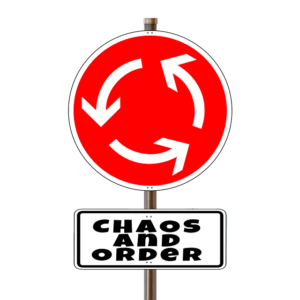by Jayme Radomski | Feb 9, 2018 | Busyness, Mindfulness, Nesting
 Do you have a ton to do and have no idea where to start? Would you like to know with each step you take you’re heading in the right direction? Would you like to narrow your ‘to do’ list down to a few key items and let go of the rest? Would you like to work smarter, not harder?
Do you have a ton to do and have no idea where to start? Would you like to know with each step you take you’re heading in the right direction? Would you like to narrow your ‘to do’ list down to a few key items and let go of the rest? Would you like to work smarter, not harder?
Answer these six questions to find your focus, do what you want to do and feel great about your life while you’re doing it.
1. What do I care about most? Where is my heart leading me?
Asking this question will give your heart a space to speak and be heard. When we get wrapped up in all the ‘stuff’ we have to do we often overlook what our heart wants.
2. What do I really want to do? Is this truly what I want?
Doing what you really want is a process of identifying and letting go of the things that you don’t want and replacing them with things that you do want. Overtime you’ll rebalance your life to include more of what you want to do.
3. How will I feel while I’m doing what I’m doing? Will this bring me joy?
If what you’re doing doesn’t give you pleasure while you’re doing it, you may be on the wrong track. ‘Doing’ takes up much more time than the actual result. We reach each goal only once and then it’s over. The journey to our goals is what fills our life with experiences. If you’re not feeling good during the ‘doing’, it may not be worth it. Give yourself permission to do things that feel good and you’ll live an inspired life.
4. What purpose will this serve?
If the answer isn’t clear you may be letting life lead you.
This question helps you make better choices for your life. Basing your actions on a clear purpose puts you in the driver’s seat which means you are leading your life instead of letting it lead you.
5. What is the priority of each item on my list?
We make choices about what we’re going to do all day long, but how often do we make choices after asking ourselves the first four questions above? Answering the above questions first, will guide you to living a more fulfilling life.
6. How am I going to do it?
After narrowing your focus create a mini action plan for each item. Write down the steps you’ll need to take to make it happen. Focus on one or two things at a time. Don’t try to do everything at once. Give yourself a chance to worker smarter and you will get more done.
Before jumping into your ‘to do’ list, take some time to reflect upon these questions. By doing so you’ll put yourself on a life and/or business path that reflects more of what you really want. Determine your FOCUS first and you’ll experience more fulfillment.
by Jayme Radomski | Jan 17, 2018 | Clutter, Mindfulness, Nesting, Productivity
 Do you walk in the house after a long day at work and just sigh at your cluttered house? Have you planned to organize one morning but just did not know where to start or were just not in the mood?
Do you walk in the house after a long day at work and just sigh at your cluttered house? Have you planned to organize one morning but just did not know where to start or were just not in the mood?
Are you caught in a vicious cycle: as soon as you organize one room another one has turned to chaos? Maybe you just need to prioritize, find motivation, and ask for help. Easier said than done?
Here is how to get started:
Prioritize
As with most goals in life, you want to strive for progress and improvement, not perfection. Most of us do not have time to achieve perfection in everything we do and still live a happy, fulfilling life. When you set goals, make them achievable, attainable. When you make that progress, create a visual way to track it or remind yourself of all you have accomplished. Since we will never have more than 24 hours in a day, we may have to say “no” to some activities and tasks.
As you list each goal, task, or activity, ask yourself if it is necessary, if it supports your ultimate goals, or if any other activity or person will be negatively affected if it does not happen. You may see your list shrink before your very eyes. If you are not sure how to narrow your list, search the internet, ask a friend, or consult a professional organizer (we help with both the tangible and intangible).
Motivate
Do you start the day with the best of intentions to declutter the bathroom only to lose your drive because it is “just not worth it?” What is worth it to you? What do you value? Why? These questions may not seem to have much to do with organizing, but they can be the key to your motivation. How much time do you spend on activities that relate to your values? Most of us would probably answer “not enough.” Then why would you ever spend time on an activity not related to your values, such as organizing?
The answer: organizing allows you to focus more on your values. Organizing means less time searching for the other shoe, fewer arguments over who last used the scissors and did not put them back, less time cleaning around the clutter. With less time wasted, you have more time to be with family, exercise, eat healthy, and pursue those life goals that really matter. The next time you wonder why you would ever make time to organize, remember that organizing can be a means to an end. If you find a task that seems pointless, ask yourself how that task can bring you closer to what means the most to you. It is amazing how a change in attitude and knowing what is in it for you can motivate.
Ask for Help
Even if most of your chores and daily tasks are “value added”, they are not always fun and often too much for one person. Solution: spread the responsibility among the whole household. What is boring to one person may be fun for another. One person’s weak spot may be another person’s strength. Some people have time in the morning to help everyone get ready for the day, and others have more time at night to help everyone get ready for bed. When you do ask for help, just remember to be specific or be prepared for the help to be not exactly what you expected. Letting others pick what they want and find their own way, within reason, may even make them more willing and productive.
If organizing is overwhelming, a professional organizer can help. See if Top Shelf Home Organizing can help you on your journey. Contact Jayme to schedule a consult or chat about organizing.
by Jayme Radomski | Nov 16, 2017 | Relationships, Holidays
 When is the last time you snapped at your husband or were short fused with the kids because the house was a mess? Are you hanging on to old bad relationships and old stagnant items?
When is the last time you snapped at your husband or were short fused with the kids because the house was a mess? Are you hanging on to old bad relationships and old stagnant items?
There is a link between organization and personal relationships. Overall, organizing improves how you feel. This can have a positive effect on your personal relationships.
How Does Organizing Help Relationships?
Being disorganized distracts you from your priorities. Whereas, removing clutter frees space for fresh ideas and fresh relationships. It helps you move onto the next step in your life. Clearing the clutter also helps you to rid the people and things that bring bad memories and bad feelings. Plus, getting organized isn’t about the stuff. It is about what the stuff does to you and your personal relationships. Being organized will help you stay focused, achieve your goals and seek clarity. In addition, it will improve the relationships that matter most to you.
Having an outsider help you get organized will provide an objective opinion. Then, you won’t strain or stress over the organizing process.
How Professional Organizers Can Help
Professional organizers can help those of us too busy, too confused, too tired, or too stressed to deal with clutter ourselves. In fact, getting help from an organizer is no different than getting help with any other thing you may not be able to do, or have time to do on your own. Organizing requires professional help just like taxes, real estate, legal matters, investments, and retirement accounts. More importantly, organizers have effective systems and processes. Which make them more efficient, improve time management, and improve daily routines. Organizers can also provide professional resources such as; closet companies, movers, art appraisers, garage companies, and painters. They also have resources such as; auction houses, organizing products and stores, junk companies, shredding companies, consignment stores, photo and paper scanning companies and contractors.
If you need help reducing your clutter to improve your personal relationships, see how Top Shelf Home Organizing can help you on your journey. Contact Jayme to schedule a consult or chat about organizing.
by Jayme Radomski | Nov 14, 2017 | Clutter
Getting organized and being organized is a dream that can come true! However, an organizing journey will be most successful if you have a plan. Write down your organizing goals. Dream big and don’t hold back. Share these goals and dreams with someone to help empower you to get started. Use these tips to help with your plan and to launch you forward on your organizing journey.
Deciding Which Area of Your Home to Organize First
Deciding where to start is challenging when you have many areas of your home that need to be organized. Having a plan as to which areas you will work through first and last will help you stay focused.
Here are Some Ideas on Where to Start:
- Top Down or Bottom Up
Starting with the top of your home (or bottom) is a logical way to work through your home, organizing area by area. Start in your attic. Then work through bedrooms, bedroom closets, linen closets and bathrooms. Next work through your living room, dining room, kitchen, playroom and home office. Then the final areas would be your basement, garage, storage unit and yard.
- Inside Out
Starting with the inside of you home is another strategy. With this process, you work through all your closets and your pantry first. The next areas are the attic, basement and garage. The last areas would be bedrooms, kitchen, home office, and then living rooms and dining room.
- Areas You See Everyday
Organizing the areas of your home you see first everyday will have immediate impact and encourage you to meet your goals for other areas of your home. Areas you see everyday include your bedroom, your bathroom, your closet, kitchen and office. Choose the area with the largest impact and work through that area to completion. Enjoy the results before moving to the next.
- Areas You Do Not See Everyday
Organizing areas that you do not see everyday can be beneficial. If the organizing process will bother other family members or take an extended amount of time due to your schedule or the size and condition of the space, you may want to start with areas you do not see everyday. Working in a basement, storage area or attic where you can close a door during the process will help reduce stress for you and your family if the thought of organizing and removing unneeded items brings anxiety.
Once you have a plan of how you will work through your house, set organizing goals for each area of your home and write them down.
Where to Start with Organizing Items
You can also divide your organizing project into item categories of what you will organize first, this will bring structure to your journey. Also, write down all the items you want organized in your home to provide guidance and keep you on track.
Here are Some Ideas on How to Organize by Categorizing Your Items:
- Start Easy
Start with items that are easy to organize. These items will have obvious categories and obvious places to be stored. Items easier to organize include clothing, linens, pantry items and toys. Once the easy items are managed, move on to more difficult categories such as paperwork, kitchen items, garage items and many items typically stored in the basement. More difficult items would be saved for last, when the rest your home is organized. These items include photos, old paperwork, mementos and items that have been in storage for a long time.
- Items You Use Everyday
If you organize the items you use every day first, it will motivate you to continue to organize the rest of your home. Starting here will give you immediate gratification as you see and use these items everyday. This items include your clothing, your toiletries and your kitchen items. This area may also include items on your desk and paperwork.
- Items You Do Not Use
Organize items you do not use frequently first, this way you can free up space and energy for the items that you use frequently. Going through the items that you do not use frequently and purging the unnecessary is a good place to start if getting organized will bother other family members. They will notice a tidy space before questioning what you did with the items. These items may include tools, mementos, items from past hobbies and projects, and seasonal items.
Save the Difficult Items and Areas for Last
Start with an easy area or item. This will build motivation to continue organizing your home. Difficult items and areas include photos, mementos, basements, attics and storage units. Your family is likely to help in these areas after they see the results and enjoy the benefit of all the other organized areas of your home.
Getting organizing is a journey. Start with small projects and enjoy the results. A professional organizer can help you along the way. See if Top Shelf Home Organizing can help you on your journey. Contact Jayme to schedule a consult or chat about organizing.
by Jayme Radomski | Oct 5, 2017 | Cooking & Kitchen, Eating & Kitchen
I am sure you have heard meal planning can help you eat healthy and stick to a budget. This is true, no matter your culture, eating habits or household size, having a plan will prevent you from last minute drive-thru lunches and take and bake pizza dinners. Although we all love a simple pizza dinner every once in a while.
 Here are a couple ideas to help you to get into the habit of planning your meals.
Here are a couple ideas to help you to get into the habit of planning your meals.
Planning Meal Ideas
Jot down meal ideas to last two weeks and keep a running list with you at all times. This can be a simple notepad or a meal plan app such as Mealime, Yummly or Foodprint.
For your meal planning, double recipes for freezer meals and leftovers, and leave room for dining out. Make sure not to over plan. Over planning can lead to food waste and possibly leave you feeling burnt out from too much time in the kitchen. Keep your meals simple, especially if you do not enjoy cooking or have a busy schedule. Consider a no cook or raw meal every once in a while. In our house, we do a meal of cubed cheese, cold meat, raw veggies, fresh fruit and whole grain crackers every couple weeks. The kids love it and it works well on a busy weeknight.
You can also try meal delivery services such as Blue Apron, Sun Basket, etc. it works well as a supplement to your planning. However, be sure the meals arrive on a good day for you to actually cook the food. The food will arrive fresh and need to be prepared within a day or two. In addition, check the portion options are sufficient for your family and will produce leftovers.
Planning a Meal Budget
Identify your food budget. Be sure to include a reasonable budget for dining out. Stick to your budget by eating seasonal produce, stocking up on meat when it is on sale or purchasing protein from a local meat supplier. In your meal plan, include a couple inexpensive, non-meat meals.
Eating healthier does not have to require spending more money. A local holistic health coach can guide you to planning healthier meals without breaking the budget. Better Health by Heather has helped our family eat healthier (our kids now get a serving of veggies in their breakfast smoothies without even knowing it!).
Planning for Shopping & Preparing
Plan a day to do your grocery shopping. Take your list to your local grocery store and try your best to stick to the list. You may also consider grocery delivery. Stores may add on a minimal fee for deliver, but the cost typically is made up in the time you would spend driving and shopping.
Identify a day for food preparation. This does not need to be an entire day; just a day that you can prepare fresh produce for weekday lunches and after work and school snacking. Although, doing both shopping and food preparation in the same day may leave you feeling frustrated and burned out. Try to keep these days separated.
Have fun planning your meals and enjoy watching your family eat better. There is no perfect plan. Don’t get frustrated by wasted food or too much time in the kitchen. Learn from your mistakes and tweak your plan to best fit your household.
 Do you have a ton to do and have no idea where to start? Would you like to know with each step you take you’re heading in the right direction? Would you like to narrow your ‘to do’ list down to a few key items and let go of the rest? Would you like to work smarter, not harder?
Do you have a ton to do and have no idea where to start? Would you like to know with each step you take you’re heading in the right direction? Would you like to narrow your ‘to do’ list down to a few key items and let go of the rest? Would you like to work smarter, not harder?



